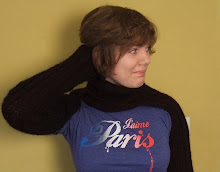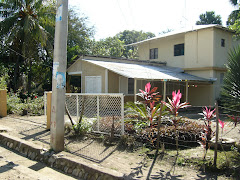
Before I finally get started on my homework, I always have to brew myself a big pot (or thermos) of tea. (Sometimes I also have to write a blog post, to, um, get in the mood, but that's another story...) I drink a lot of tea. Much more than water. More than coffee. I always have a pot of tea at the ready, because it's comforting, warm, and tastes nice.
But, as with most other edible products, I have a quality threshold. A threshold that is rarely passed in the Netherlands.
Due to its extensive trade history, the East India Company, its connection with Indonesia, and all of that, the Netherlands would have a rather remarkable tea tradition.
Well. It doesn't.
If you order a cup of tea at most cafes, you will get a cup of hot - but not boiling - water and a dish of tea bags. The majority of the selection is usually herbal, with one or two Early Greys or English Breakfasts. Nothing to write home about, and hardly worth the minimum 1.50 you will be charged for it.
In the nicer cafes, the sorts of places you would also trust for a cup of coffee, you can count on a better quality and selection of tea: Japanese Sencha, Earl Grey, Lady Grey, Assam, Oolong, Lapsang Souchang, etc. They are generally not tea bags, but loose tealeaves that are dosed into tea bags as ordered or served in cafetieres.
And when you go to a friend's house, you never know what to expect. Usually there's a simple black tea of some sort (always my preference), but there can be other strange options. The selection at the Albert Heijn is wide and strikes me as increasingly unusual.
Once, a friend offered to share her teabag with me in the break room: honey. I have seen melon tea at a friend's house, blueberry tea at the grocery store, and at work, strawberry tea was always very popular.
How do you make tea leaves out of a melon? With strawberry and I suppose possibly even blueberry, tea could be made with the leaves and blossoms of the plant. But with the melon? Why not just heat up some artificially flavored melon juice?
And honey - what is the point of somehow making a sort of powder that is flavored like honey, when you could just take a spoonful of honey and let it dissolve in your hot water?
And caramel tea? How does that work, exactly, because caramel is simply caramelized sugar, and the problems I have with this concept are the same as those I have with honey tea. Surely you could just stir a spoonful of caramel sauce into your cup, or let some brown sugar dissolve into your water.
Then there are those flavors that just seem so unlikely - such as banana/vanilla/pineapple tea. I can't help but be amused by these flavor options. Of course, such outlandish flavors must be available all over the U.S. and many other countries as well as the Netherlands, but I never encounter them there.
I still ask my parents to send tea from home whenever possible. I forgot to bring some back with me this time, but some day soon I hope to receive a package containing my stock of earl grey, Lapsang, darjeeling, and black currant tea. My tea canisters are looking pathetically low.





5 comments:
Don't worry...soon your package will arrive. And now I'm inspired to include a little surprise tea!
This won't help, because Zutphen is a long way from Middelburg. But in Zutphen, one of my favorite places on the globe, is De Pelikaan, once and perhaps still tea purveyors to the Queen. It's a fine old shop which except for the electric lights must look just as it did two or three hundred years ago, and next door to the shop (and communicating through wide doorway) is the tea-room, where you can have a wonderful tea. Maybe it's online. If so, maybe you can order from it.
Yup:
http://www.de-pelikaan.nl/
Yeah--what is up with Dutch tea? I always wondered about that. Of course coffee is not usually something to write home about either.
Although at least you get that nice cookie with your coffee (and tea as well?)!
Post a Comment